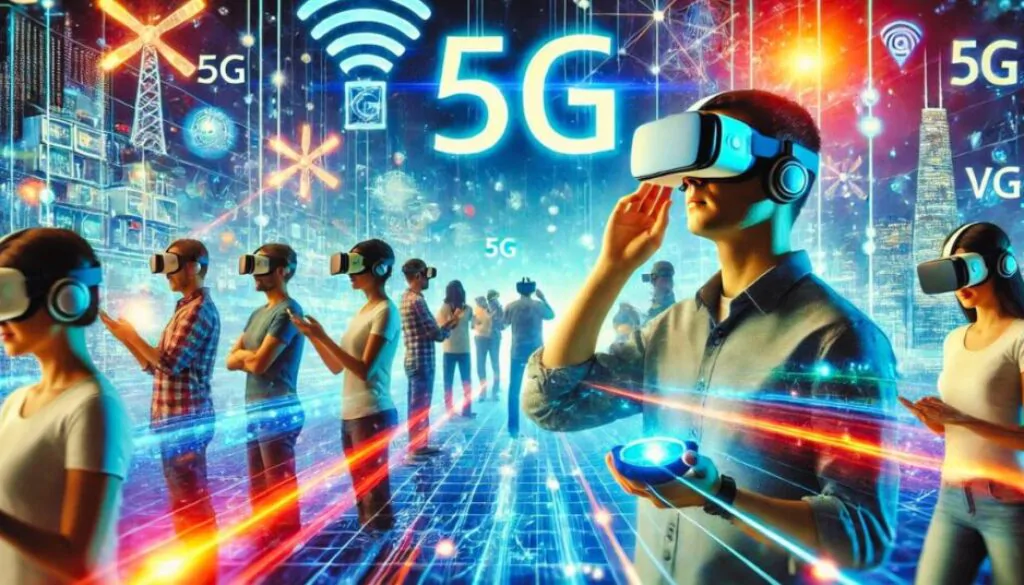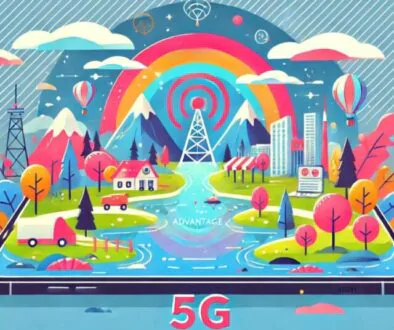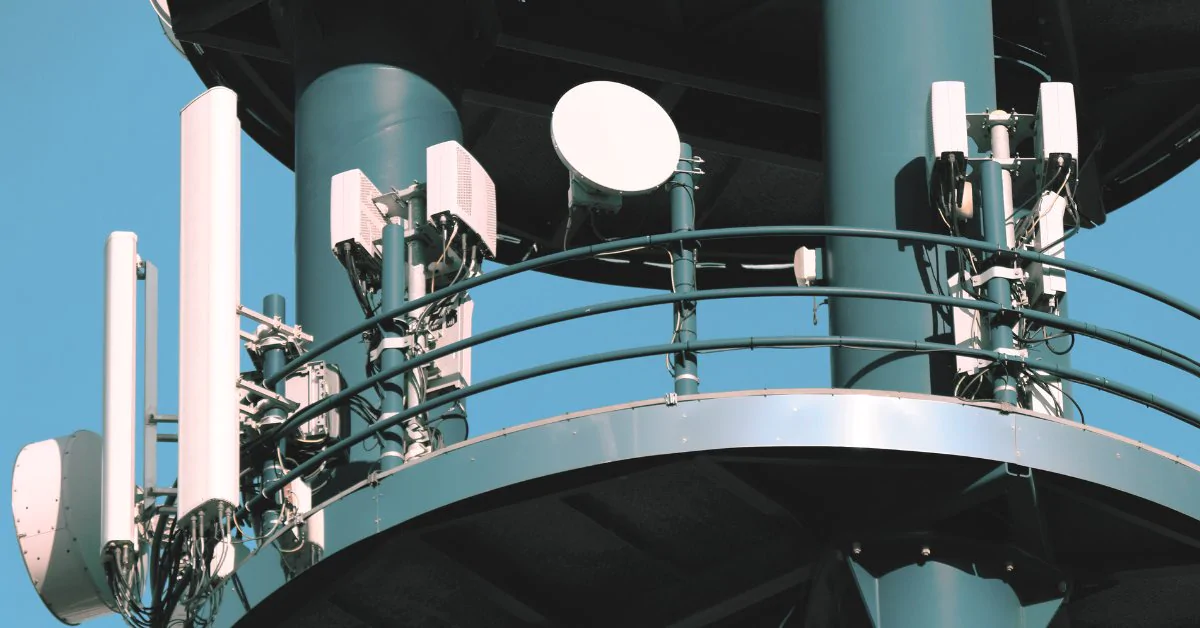5G – The revolutionary impact in the future of connectivity
English
Español (Spanish)
简体中文 (Chinese (Simplified))
हिन्दी (Hindi)
Português (Portuguese (Brazil))
Français (French)
Deutsch (German)
Table of contents
Getting started
The advent of 5G technology marks a significant leap in the evolution of mobile networks, ushering in an era where the digital and physical worlds converge seamlessly.
From the inception of 1G in the 1980s, offering basic analog voice communication, to the sophisticated 4G LTE that made high-speed internet on the go a reality, each generation has brought transformative changes. Now, with 5G, we stand on the cusp of a new revolution.
Unlike its predecessors, 5G is not merely an upgrade in speed and capacity; it is a multifaceted platform that promises to unlock possibilities previously confined to the realms of science fiction. Imagine a world where cities are smart, factories are autonomous, vehicles drive themselves, and surgeries are performed by robots controlled from miles away.
The core technologies that underpin 5G, such as millimeter waves, massive MIMO, beamforming, and network slicing, are what make these futuristic scenarios possible.
What is 5G?
At its core, 5G is the fifth generation of mobile network technology, designed to provide unprecedented speed, capacity, and low latency. While 4G focused on enhancing mobile internet speed and quality, 5G is set to revolutionize how we connect with the world around us, enabling a new era of immersive experiences and smart technologies.
Technologies behind 5G
The groundbreaking capabilities of 5G are built on a foundation of advanced technologies. Among these, millimeter waves, massive MIMO, beamforming, and network slicing stand out as main enablers of the network’s performance and flexibility.
Millimeter waves
Operating at much higher frequencies than previous generations, millimeter waves allow for significantly faster data transmission. However, their short range and susceptibility to obstacles necessitate a denser network infrastructure with more base stations and antennas.
Massive MIMO
Massive MIMO (Multiple Input Multiple Output) technology uses multiple antennas to send and receive more data simultaneously, boosting network capacity and efficiency. This technology is essential for handling the vast number of devices expected to connect to 5G networks.
Beamforming
Beamforming is a technique that directs wireless signals directly to specific devices rather than broadcasting them in all directions. This targeted approach reduces interference, improves signal quality, and enhances network efficiency, particularly in densely populated areas.
Network slicing
Network slicing allows a single physical 5G network to be divided into multiple virtual networks, each optimized for specific services or applications. This enables more efficient use of network resources and ensures that critical services, such as emergency communications or autonomous vehicles, receive the necessary bandwidth and low latency.
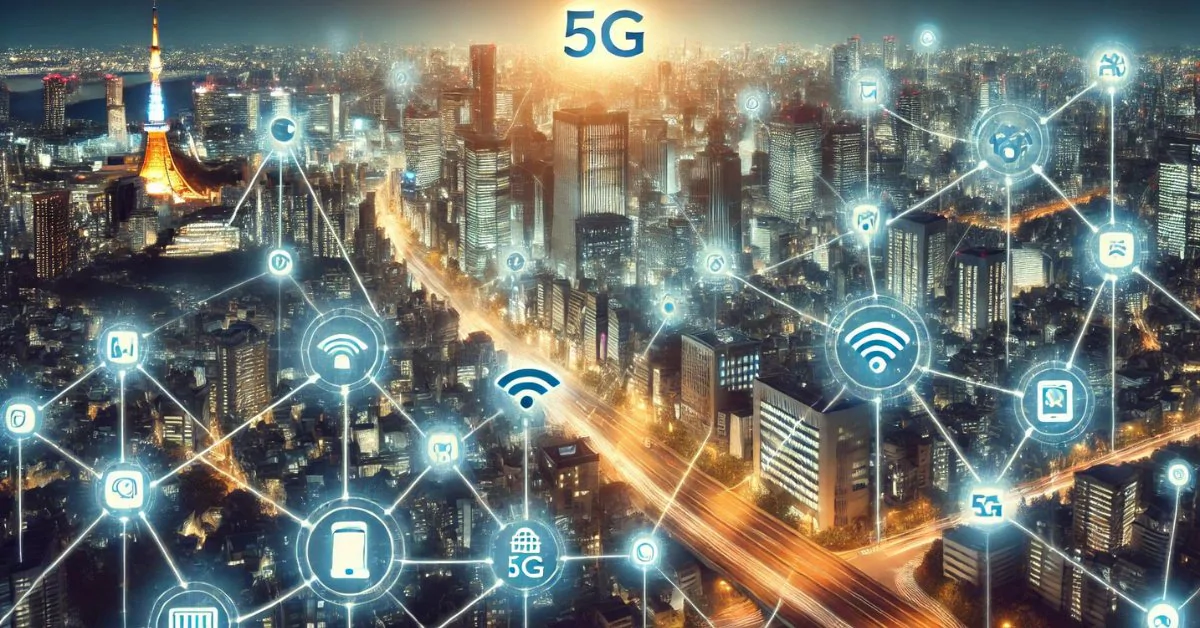
The benefits of 5G
The introduction of 5G will bring numerous benefits, not just in terms of speed but also in the sheer capacity and connectivity it offers. This transformative technology is poised to reshape industries, economies, and everyday life.
Speed and latency
5G promises to deliver download speeds up to 100 times faster than 4G, making it possible to download a full-length HD movie in seconds. Furthermore, with latency reduced to mere milliseconds, real-time communication and interaction will be seamless, opening up new possibilities for applications like virtual reality and remote surgery.
Connection capacity
The 5G network is designed to support a massive number of connected devices simultaneously. This is particularly important for the Internet of Things (IoT), where billions of devices — from household appliances to industrial machines — will be connected and communicating with each other.
IoT connectivity
With its ability to handle a vast number of devices efficiently, 5G will be the backbone of the IoT revolution. Smart homes, connected cars, and intelligent cities will all benefit from the reliable and ubiquitous connectivity that 5G offers.
5G Use cases
The potential applications of 5G are diverse and far-reaching, encompassing various sectors and industries. From smart cities and autonomous vehicles to telemedicine and augmented reality, 5G will enable innovations that were previously unimaginable.
Smart cities
5G will be the cornerstone of smart cities, where everything from traffic lights to waste management systems is connected and managed in real-time. This will lead to more efficient use of resources, reduced pollution, and improved quality of life for urban residents.
Industry 4.0
In manufacturing, 5G will power Industry 4.0, where factories are equipped with smart machines that communicate with each other to optimize production processes. This will lead to higher efficiency, reduced downtime, and more flexible manufacturing systems.
Autonomous vehicles
Autonomous vehicles rely on real-time communication with other vehicles, infrastructure, and cloud-based systems to operate safely and efficiently. The low latency and high reliability of 5G make it an essential technology for the development and deployment of self-driving cars.
Virtual and augmented reality
5G will enable more immersive virtual and augmented reality experiences by providing the high bandwidth and low latency needed to render complex graphics in real time. This will have applications in entertainment, education, training, and more.
Telemedicine
In healthcare, 5G will enable remote consultations, real-time monitoring of patients, and even remote surgeries. This will improve access to healthcare, particularly in remote areas, and allow for more personalized and timely treatments.
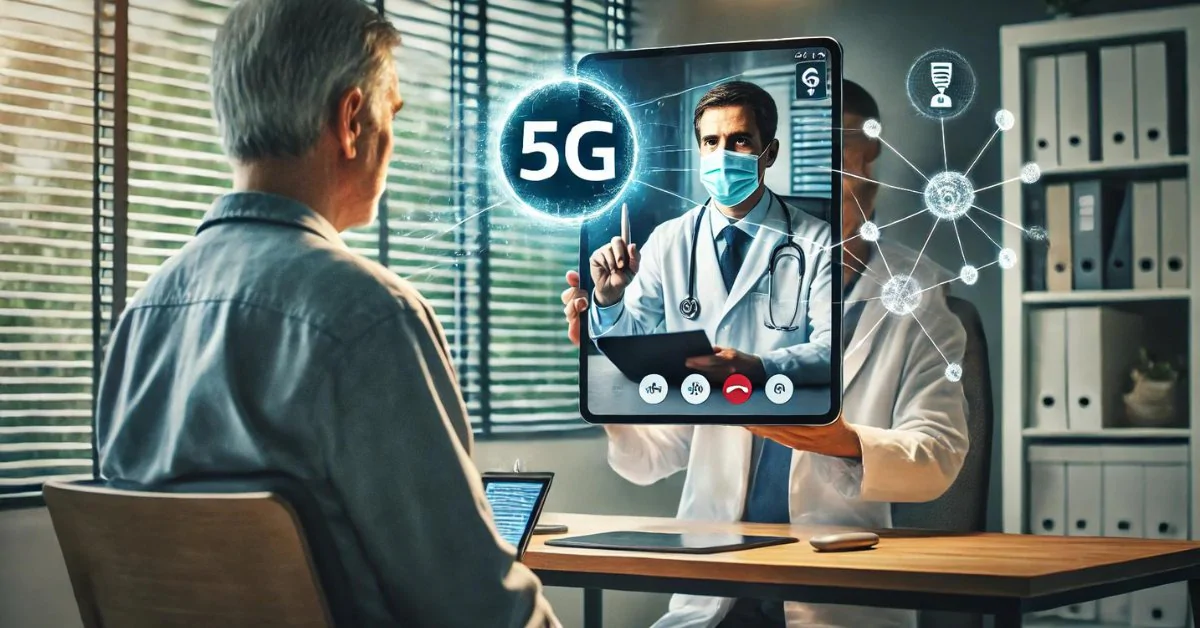
Economic impact of 5G
The economic impact of 5G will be deep, with the technology expected to generate trillions of dollars in value worldwide. It will drive growth across various sectors, create new jobs, and stimulate innovation and investment.
Challenges to 5G adoption
Despite its potential, the rollout of 5G faces several challenges. Infrastructure costs, device compatibility, and geopolitical issues are among the obstacles that must be addressed to fully realize the benefits of 5G.
Infrastructure
Building the infrastructure needed for 5G is a complex and costly endeavor. The higher frequencies used by 5G require a denser network of base stations and antennas, particularly in urban areas, where demand for connectivity is highest.
Cost
The high cost of deploying 5G networks and developing compatible devices could limit its initial adoption to wealthier urban areas. As the technology matures and becomes more affordable, it will likely spread to other regions.
Device Compatibility
Many existing devices are not compatible with 5G, meaning consumers will need to upgrade to 5G-capable smartphones, tablets, and other devices to take full advantage of the new network. This transition will take time as manufacturers and consumers adapt.
Political and geopolitical issues in 5G
The global rollout of 5G has been accompanied by significant political and geopolitical tensions, particularly between the United States and China. Concerns about cybersecurity, digital sovereignty, and the involvement of Chinese companies like Huawei have led to widespread debates and regulatory actions.
US-China disputes
The rivalry between the US and China in the race for 5G dominance has led to significant tensions, with the US pushing for bans on Chinese technology in 5G networks over security concerns. This has influenced the global adoption of 5G and the strategic decisions of other countries.
Cybersecurity and digital sovereignty
As 5G becomes the backbone of critical national infrastructure, cybersecurity and digital sovereignty have become paramount concerns. Nations are increasingly wary of relying on foreign technology for their 5G networks, leading to stricter regulations and scrutiny.
Huawei and the ban
Huawei, a Chinese telecommunications giant, has been at the center of the 5G controversy, with several countries, led by the US, banning its equipment from their networks. These bans are driven by fears that Huawei could be compelled by the Chinese government to engage in espionage, a claim the company strongly denies.
Key players in the 5G market
Several key players are driving the development and deployment of 5G, including telecommunications operators, equipment manufacturers, and chip developers. These companies are investing heavily in 5G to position themselves at the forefront of the next generation of connectivity.
Telecom operators
Telecom operators are the backbone of 5G, investing billions in building out the necessary infrastructure and rolling out services to consumers and businesses. Their role is critical in ensuring the widespread availability and adoption of 5G.
Equipment manufacturers
Companies like Ericsson, Nokia, and Huawei are leading the charge in providing the equipment needed for 5G networks. Their innovations in antennas, base stations, and network technology are essential for the successful deployment of 5G.
Chip developers
Qualcomm, Intel, and other chip developers are creating the processors that power 5G devices. These chips are critical for enabling the high speeds, low latency, and connectivity needed for 5G applications.
Global 5G standards and regulations
The successful deployment of 5G depends on global standards and regulations that ensure interoperability and security. Different regions are adopting 5G at varying paces, influenced by their regulatory environments and market dynamics.
Regional differences in 5G adoption
The adoption of 5G varies widely by region, with Asia, particularly China and South Korea, leading the way. Europe and North America are also making significant strides, while other regions, like Latin America, are still in the early stages of 5G deployment.
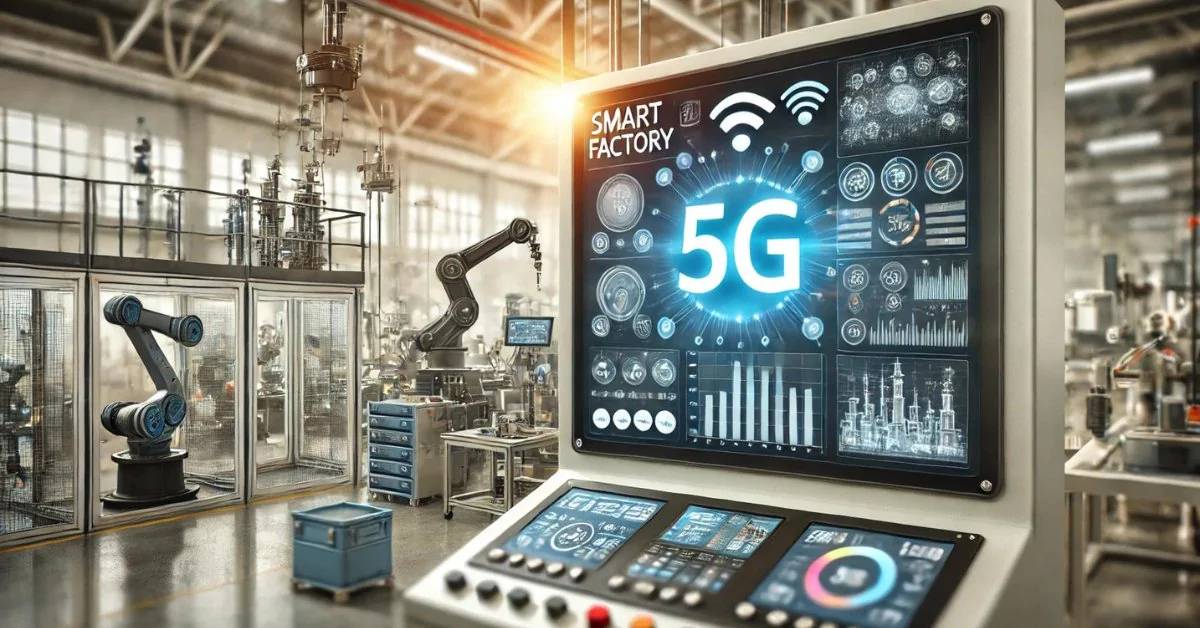
5G and public health concerns
As with any new technology, 5G has sparked public health concerns, particularly regarding exposure to radiofrequency radiation. While these concerns are valid, the scientific consensus so far suggests that 5G is safe when operated within established guidelines.
Radiation and health concerns
Critics of 5G have raised concerns about the potential health risks associated with exposure to radiofrequency radiation, particularly from millimeter waves. However, current scientific evidence does not support these claims, and regulatory bodies continue to monitor and assess the potential health impacts of 5G.
Scientific studies and official positions
Organizations such as the World Health Organization (WHO) have reviewed the available evidence and concluded that 5G, when operated within recommended exposure limits, does not pose significant health risks. Ongoing research continues to monitor any potential long-term effects.
Sustainability and 5G
Sustainability is a critical consideration in the deployment of 5G, particularly regarding energy consumption and environmental impact. While 5G offers many benefits, it also presents challenges that need to be addressed to ensure a sustainable future.
Energy consumption
The dense infrastructure required for 5G, with its many base stations and antennas, could lead to increased energy consumption. However, efforts are being made to develop more energy-efficient technologies and practices to mitigate this impact.
Environmental impact
Beyond energy consumption, the environmental impact of 5G includes the production and disposal of electronic devices. As the demand for 5G-compatible devices grows, so does the need for sustainable manufacturing and recycling practices.
5G and the Internet of Things (IoT)
The integration of 5G with the Internet of Things (IoT) is one of the most exciting aspects of this new technology. With its ability to connect billions of devices, 5G will drive the development of smart homes, cities, and industries.
Connected devices
5G’s ability to connect a vast array of devices simultaneously makes it the perfect enabler for the IoT revolution. From smart refrigerators to industrial sensors, 5G will facilitate the seamless communication and automation of countless devices.
Smart homes and buildings
With 5G, smart homes and buildings will become more advanced and efficient, offering automated systems for lighting, security, climate control, and more. These innovations will enhance convenience and energy efficiency for consumers.
The future of 5G and beyond
As we look to the future, the possibilities with 5G seem endless. While the technology is still being rolled out, discussions about 6G and beyond are already underway, promising even more transformative advancements.
6G possibilities
Though 5G is still in its infancy, the research community is already exploring the potential of 6G. This next generation could offer speeds up to 100 times faster than 5G, with applications in artificial intelligence, quantum computing, and more.
Innovation and new business models
The rollout of 5G will stimulate innovation across industries, leading to new business models and opportunities. From healthcare to entertainment, the possibilities are vast, and the companies that can harness the power of 5G will be at the forefront of the digital revolution.
The dawn of 5G marks the beginning of a new chapter in the history of technology, where the limits of connectivity are pushed further than ever before. As we navigate the challenges and embrace the opportunities, one thing is clear: 5G is not just an evolution — it is a revolution that will shape the future of our world in ways we are only beginning to imagine.
Sources:
- GSMA. “The Mobile Economy Report.” gsma.com/mobileeconomy
- Ericsson. “Ericsson Mobility Report.” ericsson.com
- Qualcomm. “The 5G Economy.” qualcomm.com
- IoT Analytics. “State of the IoT 2020.” iot-analytics.com
- Opensignal. “5G User Experience Report.” opensignal.com
- Ookla. “The Ookla 5G Map.” speedtest.net
- WHO. “Electromagnetic fields and public health: Mobile phones.” who.int

